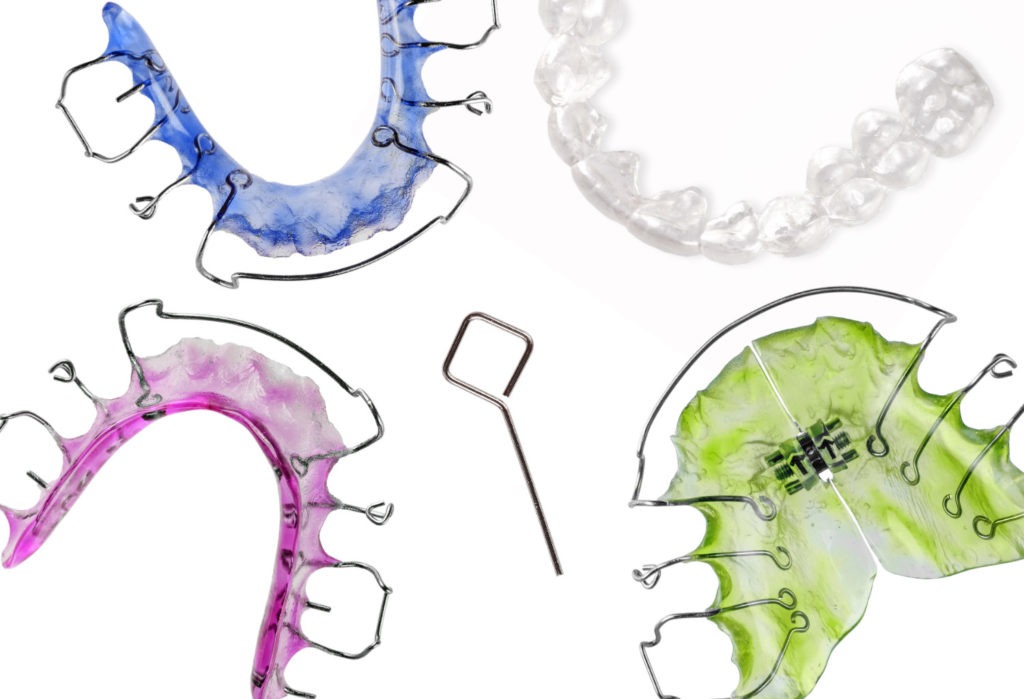There’s a great deal of time and energy that goes into orthodontic treatment, whether you’ve spent years in braces or have been sporting Invisalign aligners for a number of months. The day you say goodbye is always an exciting day. But don’t get caught up in the celebration just yet – you’ve got a little further to go! Maintaining your beautiful smile is just as important as creating it. The success of your orthodontic treatment depends upon you diligently wearing your retainer, commonly known as retention.
Here at Kottemann Orthodontics, our patients hear us talk a lot about why retainers are an integral part of keeping teeth in their new and improved positions. In order to help you understand why retainer use is so essential, we’ve put together this helpful guide.
Gum and bone alignment
After completing your orthodontic treatment, your teeth will naturally want to move back to their pre-treatment positions. It’s simply because your gums and bones have “memories” of your teeth, and they will want to push your teeth back into these remembered positions. Each tooth is held in its socket by elastic ligaments that attach the roots to the bone. The ligaments and bones in your mouth will need to align to these new positions, too. Additionally, the jaw performs its last growth spurt around the age of twenty, which can cause teeth to move to undesired positions. By wearing your retainer as directed, you help to keep that beautiful smile in place.
What exactly is a retainer?
A retainer is simply a device that keeps teeth aligned after a patient has completed orthodontic treatment. Retainers are custom-molded and designed to fit each individual patient’s mouth. Retainers keep teeth in their desired position (or retain them) using guidance and pressure.
Types of retainers

There are a variety of retainers that can be used at the end of orthodontic treatment. That said, there are two basic types: fixed and removable.
A fixed retainer usually consists of a thin wire positioned across the interior surface of the lower or upper front teeth. This is then bonded into place with a glue similar to the one used to attach braces to teeth. Although a fixed retainer can take a little more work to keep clean, it does tends to have the best outcome overall.
A removable retainer is made up of a wire going across the front teeth, held in place with an acrylic material and clasps. The clasps wrap around the back teeth to keep the retainer stationary. This can also be referred to as a Hawley retainer, and it’s probably the most recognizable retainer. There’s also a type of removable retainer that looks very similar to an Invisalign aligner, which is often called an Essix retainer.
Cleaning your teeth is easier with these retainers, but you will have to remember to wear it daily. These retainers do tend to be more prone to loss and damage, so be careful with them.
We take several factors into consideration before deciding which kind would best fit you, including your specific treatment, your lifestyle, and the overall compliance expected. Retainers are always included as part of our Phase I and full treatment plans.
Retention plan

Most orthodontists agree that some type of retainer be worn part-time for the rest of your life after teeth have been straightened – one reason is because slight drifting occurs as we age. It sounds overwhelming at first, we know! But with a little patience and practice, your retainer will become a part of your daily routine before you know it. Eventually, wearing it two to three nights per week while you sleep should be all you need to maintain your hard-won results. Since all patients have unique needs, we will customize a post-treatment plan specifically for you.
With that in mind, it’s important to note that excessive time without wearing your retainer can reverse the results you sacrificed for during treatment – especially within the first year. Like we said earlier, teeth can move back to their original positions without a retainer to provide guidance and pressure. The most common cause of a retainer not fitting anymore is simple: people don’t wear them as they’re instructed. If you lose your removable retainer or if your fixed retainer comes loose in any area please contact the office as soon as possible.
Summing up
As you can see, the success of your orthodontic treatment depends upon you diligently wearing your retainer. It prevents teeth from moving into their desired pre-treatment positions, and there are a variety of retainers and a variety of retention options to fit the unique needs of each patient. Now that we’d addressed that topic, let’s look at another one.
Why Kottemann Orthodontics?
Kottemann Orthodontics has been providing high quality, excellent care for more than 60 years and with three generations. Drs. William, Kraig, and Scott Kottemann care for their orthodontic patients in Plymouth, Minneapolis, Maple Grove, Watertown, Chaska and Orono, Minnesota and their surrounding areas. At Kottemann Orthodontics, we believe you are more than just a patient; you are part of the family.
Contact us today to schedule a complimentary consultation, or to get answers to questions that you may have!
